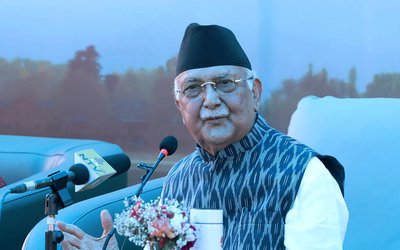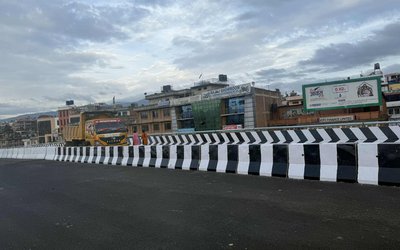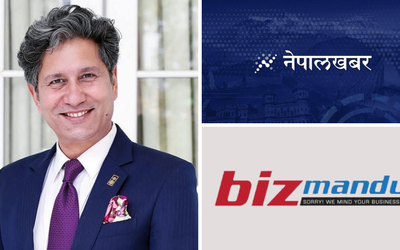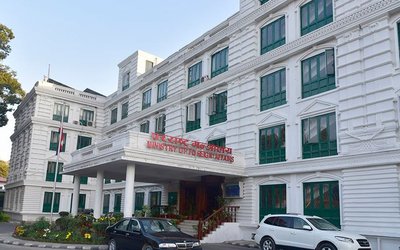More on News





Geeta B.K (name changed) is a temporary resident of Dhangadhi. She was infected by HIV five years ago through her husband, a watchman in the Indian city of Mumbai. He died three years ago of an AIDS related illness.
“HIV/AIDS almost took my life. I was not aware of anything. I had lost all hopes,” said Geeta, who is now struggling for her livelihood. “ARV worked wonders to my health.”
On medication for two years now, she worries about feeding her three children. Her younger daughter is also an HIV positive.
Samsara (name changed), 20, lives with her HIV positive boyfriend in Kathmandu. Samsara as diagnosed with HIV/AIDS five months ago. Since then, she has given up being an Injecting Drug User (IDU). Accepting the fact of her life, she is living normally like everyone else around her.
Born and raised in Kathmandu, Samsara started smoking cigarettes in school. Her youthful exuberance to try out new things, aided by the company she kept, led her to experiment with softer drugs and then brown sugar. She claims that she was a normal girl and was aware about drugs, its pitfalls and HIV/AIDS. But as an addict, she could not think straight.
Shila (name changed), another girl with IDU, has recovered from her drug addiction after going through a rehab program. At a young age, she fell into a bad company, took the risk and shared needles, usually with her husband, on several occasions. Fortunately for her, she did not contract HIV/AIDS.
She thinks addicted or recovering girls get little support from the society, including their parents, who often discard them and refrain from taking them to rehabs in fear of social backlash and shame.
Data from the 2010 UNAIDS Report on the global AIDS epidemic show that more people are living longer and AIDS-related deaths are declining as access to treatment has expanded. The total number of people on treatment increased by seven and a half times over the last five years with 5.2 million people accessing life-saving drugs in 2009, compared to 700,000 in 2004. Over the course of the last year alone, an additional 1.2 million people received treatment—a 30% increase compared to 2008. In addition, there has been a secondary dividend of stopping new HIV infections with increased access to HIV treatment. Countries have made slow but good progress in integrating tuberculosis and HIV programmes.
Nearly 10 million people are awaiting treatment.
Karuna Rai (name changed), 25, a resident of Bijayapur of Dharan, 600 kilometers east of Kathmandu, was infected with HIV three years ago through sharing needles. An IDU, Rai faces humiliation and discrimination in society. She is often put in prison whenever police find her in the city. Although she needs to take ARV from time to time, frequent prison terms deny her medicines and her rights to mobility.
“Nobody cares about IDU’s rights. Police arrest us whenever they want and put us behind bars,” she says.
Different people living with HIV(PLHIV) have different stories to tell. However, in all the districts, they are struggling to find a respectful position in their communities. Haunted by social stigma and discrimination and police atrocities, PLHIV are constantly troubled with the tension of providing two square meals to their families.
Data from the District Public Health Office in Accham and Sunsari indicate that the number of infections declined over the year. Majority of those PLHIV in the Accham district have contracted HIV from their husbands who worked as labor migrants in India and young people in Dharan mostly got infected due to needle sharing.
According to Medical Officer of Achham District Hospital Dr. Khageshwor Gelal, there are 586 HIV positive taking Pre-ART service. Leading activists Mathura Kunwar of Achham said many people living with HIV are yet to get medicines. Some 480 cases are still out of government statistic.
PLHIV Mohan Thapa of Chalsa Village Development Committee of Achham said despite giving training to people living with HIV, a majority of them are yet to find jobs.
“We have made significant progress in terms of providing basic facilities including testing facilities and medicines but there is a need to do a lot of work,” said Dr. Gelal.
Due to growing practices of using condom for safe sex and supply of needles through needle syringe exchange program, there seems to be stabilization of HIV cases. As the men still deny practicing safer sex by using condoms and practices of sharing needles is yet to come to zero, the threat is still there for new infections.
“We are compelled to share needles since we don’t have both needles and drugs together. Thanks to some NGOs, most of the IDUs now carry the needles provided by them,” said Rai.
According to a Handbook for Media Persons in Nepal, as of the 2009 National Estimate of HIV Infection, the total number of PLWHA in Nepal is 63,528, of which 3,544 are children below the age of 15. Therefore, according to the estimate, around 59,984 people above the age of 15 are living with HIV in Nepal, an adult HIV prevalence of 0.39%. The analysis for volume-wise HIV infections across different key population groups indicates that male labor migrants make up the largest proportion of cases (29.4%), followed by “low-risk” women including the wives of seasonal labor migrants (28.%), MSM (6.24%), the clients of sex workers (5.%) and injecting drug users (4%).Obviously these proportions of total HIV cases are affected by the total size of each population group.
Published by UNAIDs and Asia Pacific Leadership Forum on HIV/AIDS and Development, the Handbook for Media says the geographical distribution of HIV epidemic burden indicates that 26 highway districts, most of them bordering India, have the greatest proportion of cases with 32,097 infections (49.7% of all estimated infections), followed by remaining 39 hill districts with 12,023 (18.6%), the 7 districts of the Far Western Region with 10,352 (16%) and three districts of Kathmandu Valley with 10,112 (15.7%) infections. These four epidemic regions were analyzed in the years 2003 and 2005 and were again reviewed and maintained for the 2007 national estimates.
The first HIV infection was reported in Nepal in 1988, moving within 20 years from its initial ‘low epidemic status’ to the current 'concentrated epidemic status', meaning that HIV infection is now marked by high prevalence (> 5%) in some sub-populations while prevalence in the general population remains low (<1%).
Rights to Work
Majority of positive women in far west are single whose husbands either abandoned them or died due to HIV related illnesses. They have to look after their family and children.
“We want a respectful job,” says Nagina (name changed), who has been living with HIV for the past two years and working as a laborer at a Construction Company in Dhangadhi for a living. According to the District AIDS Co-coordinator of District Health Office, Kailali, most of the money from government, INGOs and donors is limited to providing medication and spreading awareness amongst people when the actual need is providing them income-generating skills.
“There is the need of training and employment opportunities to the people living with HIV. Only by providing training and employment, we can uplift the social status of PLHIV.”
Realizing the importance to protect the rights of PLHIV, a bill was mooted by a group of members of Legislature Parliament to give priority to PLHIV but it is yet to be tabled in the Legislature Parliament.“We are able to place a special clause in the draft of the constitution regarding the rights of PLHIV. But, we are yet to table the bill,” said CA member Gagan Thapa.
Businessman and member of Legislature Parliament Rajendra Khetan has been playing his role. As an industrialist, he is defending the right to work of PLHIV in industries and working together with other CA members to pass the bill. “PLHIV needs protections by law in employment,” said Khetan.
Rights and Dimensions
Human rights goals of universal access can be achieved through various programs and policy means. These include implementation of sufficient programs on HIV prevention, treatment, care and support that reach all those in need, particularly the most marginalized and vulnerable, implementation of law and policies and their enforcement that provide a supportive framework to enable those in need to take up available services and implementation of program that are specifically designed to overcome rights-related obstacles, such as discrimination and stigma against people living with HIV and populations at risk, gender inequality and violence against women.
These programs include “know your rights” campaigns, provision of legal aid, campaigns against harmful gender norms and violence against women, campaigns against stigma and discrimination, and programs working with police and health care workers in terms of non-discrimination, non-violence in the case of the police and the need to ensure access and to protect informed consent and confidentiality.
A national antiretroviral therapy (ART) program was started at two sites in Kathmandu in late 2004; by October 2007, there were 16 public sites providing ART. WHO estimates only 11 percent of HIV-infected individuals needed ART accessed treatment in 2007. However, Nepal’s 2010 UNGASS estimates are higher, with an estimated 19 percent of those in need of treatment receiving it. As of December 2009, 3,540 individuals were receiving ART from 23 sites across the country. With the CD4 cell count cut-off point now being increased from 200 to 350 cells, an additional 1,000 patients are expected to be added to treatment programs.







